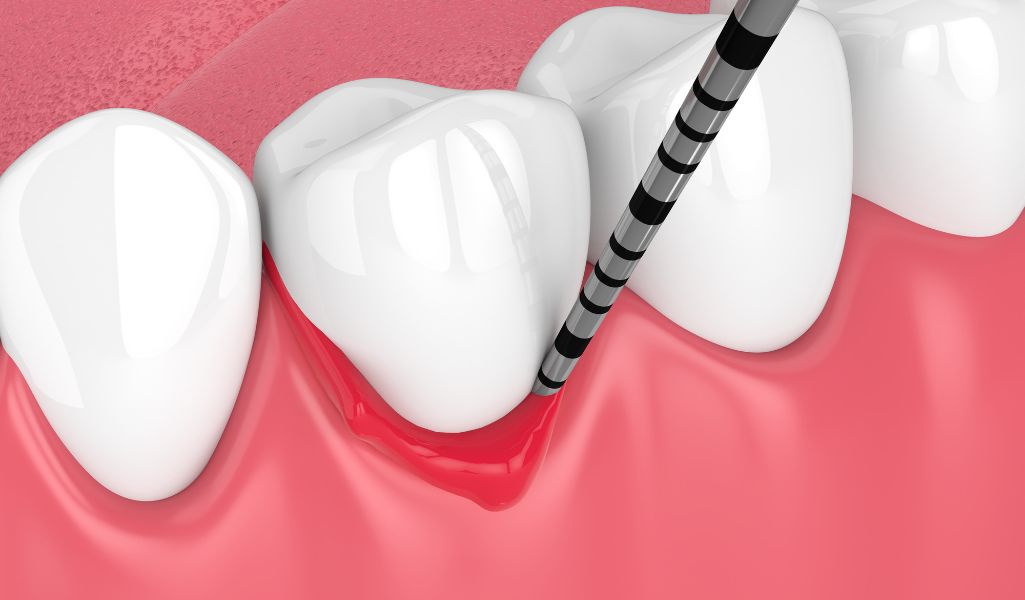Your gums play a crucial role in maintaining both the health of your teeth and the overall appearance of your smile. However, just like your teeth, your gums can experience problems that may require specialized care, including gum surgery. If you're concerned about gum recession, gum disease, or other issues affecting your gum health, understanding when gum surgery is necessary and the benefits it provides is essential.
In this blog, we’ll explore how gum surgery can protect your oral health and help you maintain a beautiful, confident smile.

Gum surgery, also known as periodontal surgery, is a dental procedure performed to treat severe gum issues or improve the appearance of the gums. Typically recommended when non-surgical treatments like cleaning or antibiotics aren't enough, gum surgery is used to address conditions such as gum disease, gum recession, or other oral health problems. Gum disease is caused by bacteria build-up on the teeth and gums, leading to inflammation, bleeding, and, if untreated, tooth decay and loss. Initially, gum disease starts as gingivitis, a mild form of inflammation, but can progress to more severe stages like periodontitis, where the infection spreads deeper into the gums and supporting structures. The primary goal of gum surgery is to restore gum health, prevent further damage, and sometimes enhance the aesthetics of your smile.
Understanding the progression of gum disease is vital for early intervention and treatment. Here are the key stages:
1. Gingivitis: The earliest stage, characterized by red, swollen gums that may bleed when brushing. Caused by plaque build-up, gingivitis is reversible with good oral hygiene.
2. Early Periodontitis: Gums begin to pull away from the teeth, forming pockets. There may be mild bone loss, but it can still be treated with non-surgical methods.
3. Moderate Periodontitis: As the condition worsens, the gums and bone continue to deteriorate, leading to deeper pockets. Symptoms include gum recession, bad breath, and loose teeth. Treatment may involve scaling and root planing.
4. Advanced Periodontitis: The most severe stage, where significant bone loss occurs, and teeth may become loose or fall out. Surgical intervention is often required to treat this stage.
Gum surgery becomes necessary when non-surgical treatments fail to address serious oral health issues. Here are the most common reasons for gum surgery:
1. Severe Gum Disease (Periodontitis): When gum disease progresses, surgeries like flap surgery or bone grafting may be needed to remove infection and restore gum health.
2. Gum Recession: Severe gum recession can cause tooth sensitivity or aesthetic concerns. Gum grafting or techniques like pinhole surgery may restore lost tissue.
3. Tooth or Bone Loss: If gum disease causes tooth loss, gum surgery can rebuild bone and tissue around the teeth to support dental implants or bridges.
4. Dental Implants: Gum surgery may be necessary to create sufficient tissue around implant areas, such as gum augmentation or sinus lift surgery.
5. Cosmetic Concerns (Gummy Smile): Gum contouring or crown lengthening can address a gummy smile and create a balanced look.
6. Oral Cancer: Gum surgery may be needed to remove cancerous or pre-cancerous tissue.
7. Abscess or Infected Tissue: Deep gum infections may require surgery to remove infected tissue and prevent further spread.
There are several types of gum surgery, each addressing different gum issues:
1. Gum Grafting (Gum Graft Surgery): Restores lost gum tissue by grafting tissue from the roof of the mouth or a donor site onto receded areas.
2. Pocket Reduction Surgery: Used to treat deep gum pockets caused by gum disease by removing infected tissue and reducing pocket depth.
3. Crown Lengthening: Removes excess gum tissue to expose more of the tooth surface, improving the appearance of a “gummy smile” and making teeth look longer.
4. Frenectomy: A procedure to alter or remove the frenulum (tissue connecting lips and gums), preventing gum recession and improving oral hygiene.
5. Soft Tissue Regeneration: Uses membranes, bone grafts, or tissue-stimulating proteins to promote the growth of new gum tissue.
The process for gum surgery may vary depending on the procedure, but generally follows these steps:

1. Local Anesthesia: To ensure comfort, the area around the gums will be numbed. Sedation may also be used if necessary.
2. Incision: Small incisions are made in the gum tissue to access underlying bone or soft tissue.
3. Gum Tissue Removal or Modification: Excess tissue is removed, graft tissue is added, or pocket depths are reduced.
4. Stitches: The gums are stitched to ensure proper healing. For gum grafts, the graft will be secured with sutures.
5. Recovery and Aftercare: After surgery, some swelling or discomfort is normal. Follow your dentist’s aftercare instructions, which may include pain management and avoiding certain foods.
Gum surgery offers numerous benefits for both health and aesthetics, such as:
1. Improved Gum Health: Gum surgery addresses gum disease and recession, ensuring healthier gums and reducing the risk of tooth loss.


